A visit to Salinas Romanas Iptuci gives the visitor an unparalleled idea of how the Romans worked the salt pans and experience the process as it occurred then and take home the same products that a Roman housewife would have been familiar with.
By Nick Nutter | Updated 14 Sep 2022 | Cádiz | Places To Go |
Login to add to YOUR Favourites or Read Later
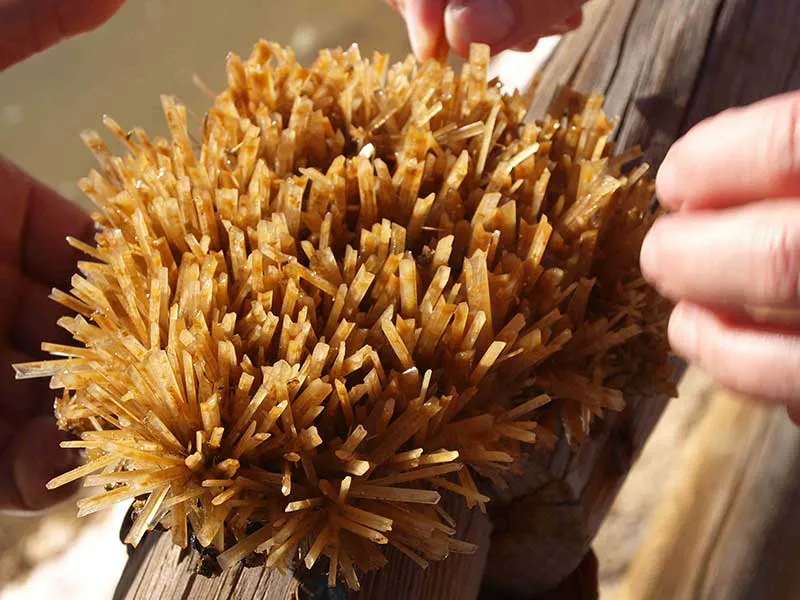
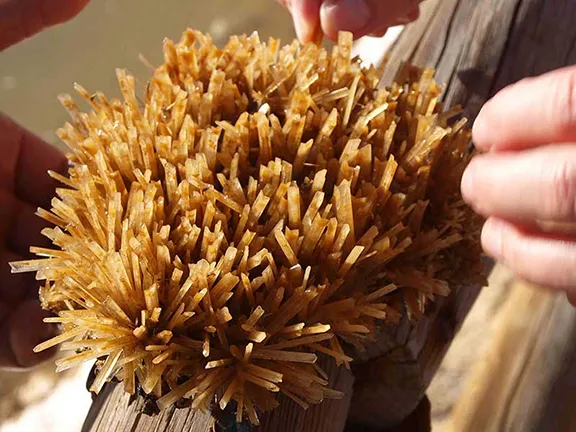
Salt crystals
Just a couple of kilometres west of El Bosque in the panoramic Sierra de Grazalema is the last inland Salinas in Cádiz province. Here a warm underground spring emerges from the ground. Its waters started in the Sierra and passed through rock impregnated with gypsum and soluble salts before bubbling up to the surface where it is collected. During the summer months of July and August the Salinas Romanas Iptuci produces 500 tons of salt.
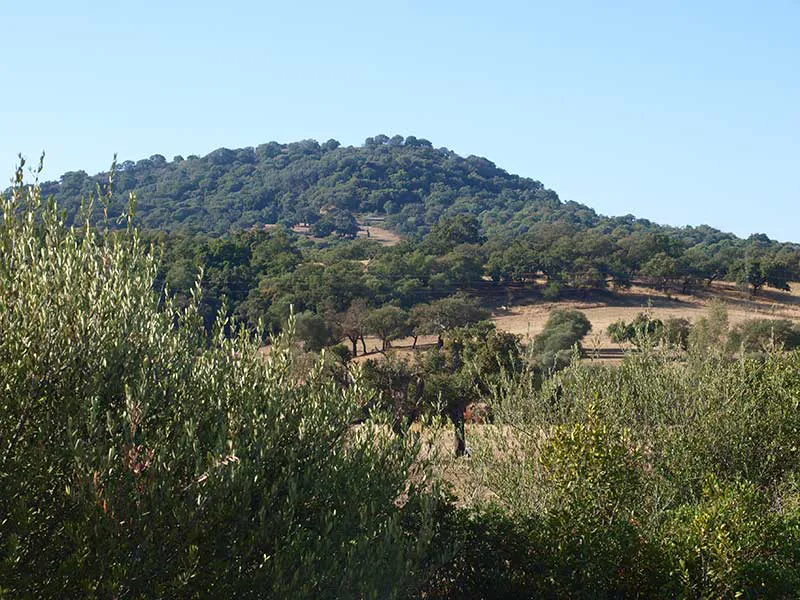
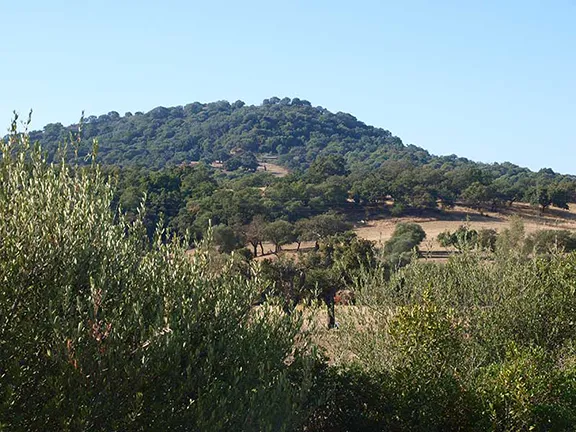
The site of Iptuci overlooking the salinas
The story starts back in the Triassic period some 230 million years ago. At that time all the continents were joined together in one super continent called Pangea. The rest of the globe was ocean. One arm of the ocean, the Neo Tethys Sea, penetrated Pangea until it lapped the shores of what would, much later, become the province of Cádiz. The shoreline changed as the continents moved and the salt water penetrated layers of semi permeable marls and clays where the salts evaporated out. Over millennia this rock was covered with crustacean shells that in turn were covered by sedimentary material which was compressed to form mudstone and limestone. Pangea split up and eventually the continents we are familiar with today took shape. The mountains of the Sierra Grazalema and Los Alcornacales formed as the African tectonic plate pushed beneath the European plate. The limestone eroded as it was pushed up creating those fantastic karstic formations. Beneath the limestone was the semi permeable rock full of salt.

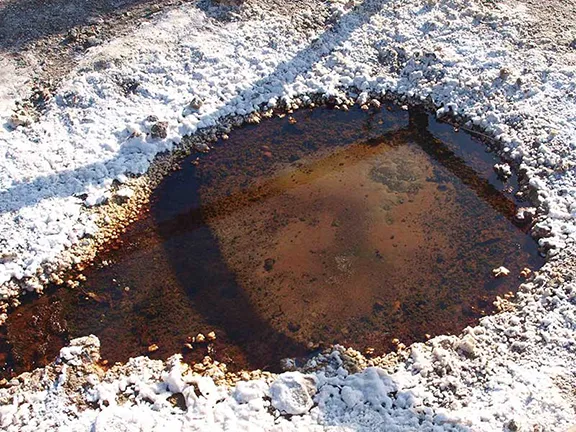
The spring emerges from the ground
Rain water falls on the Sierras, passes through the soluble limestone and into the semi permeable rock where the salts within dissolve into the water. 600 metres below and a few kilometres west the salt laden water reaches the surface. The water is at a constant 25 degrees C and contains 28 grams of salt per litre plus some dissolved iron.
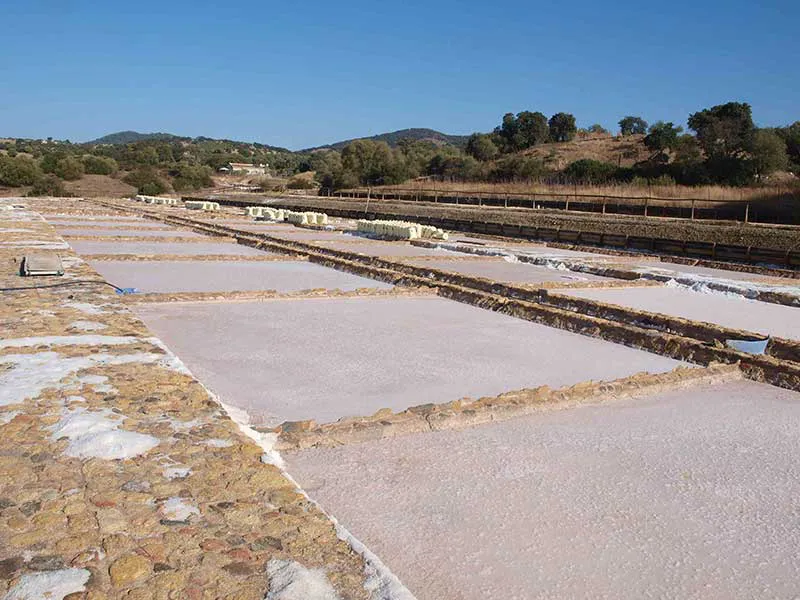
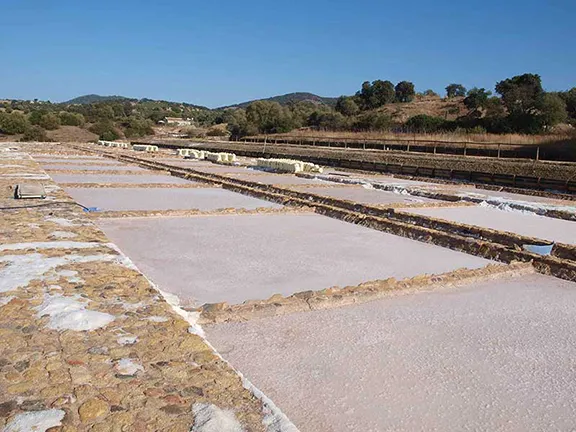
Salt pans
The springs were ‘discovered’ during the bronze age, about 3,000 years ago, but not exploited until the Phoenicians arrived on the shores of Andalucia. It was during this period that the first condensing pans were built using local stone. The method of salt extraction has not changed since.
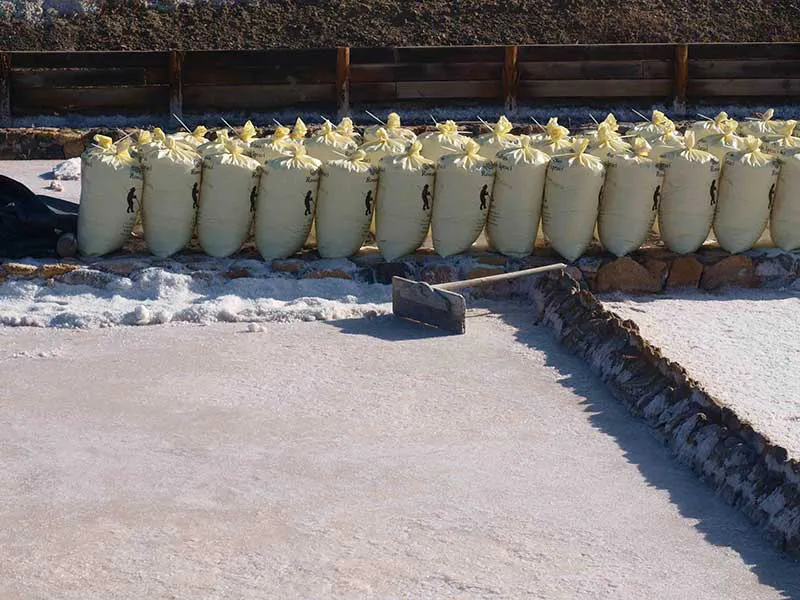

Ready for sale
The salt laden water is allowed to flow into the top pans. Once full the pans are sealed off using a simple sluice gate, normally made of tile. In the top pans the iron decants out. The water is allowed to flow into the lower pans becoming ever more saline as the water evaporates under the hot summer sun. Eventually a thick crust of salt forms on top of the water. This has to be harvested either at night or first thing in the morning before the water heats up again under the sun. Once the salt is harvested the pan is refilled with saline water and within a week he salt can once again be harvested by hand using picks, rakes and shovels whose design has not changed in 3000 years.
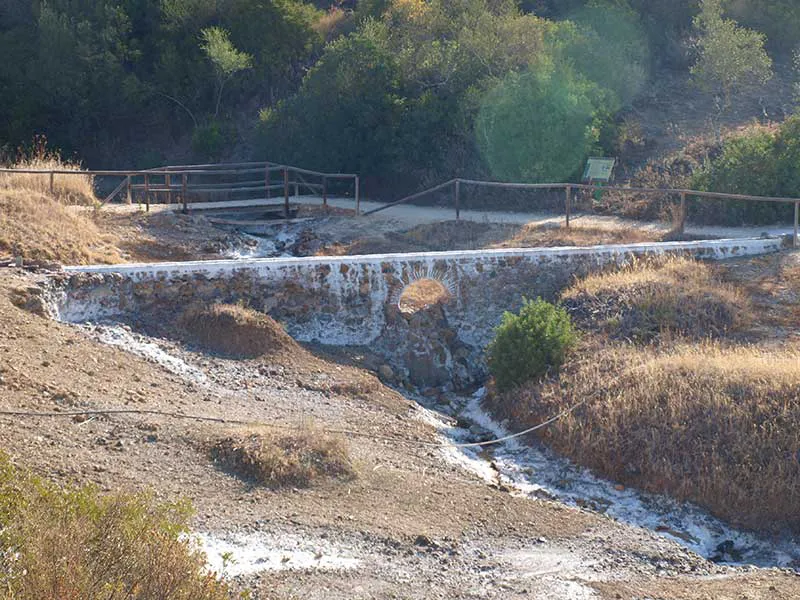
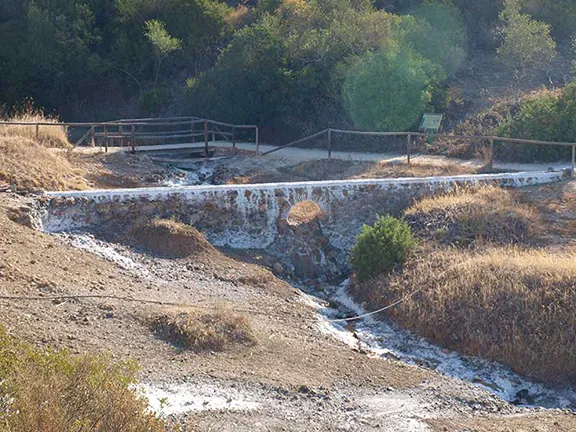
Saline water reservoir
When the Romans arrived they immediately realized the value of the Salinas and extended them. They built a town, Iptuci, on a nearby hill that became prosperous enough, through the sale of salt, to have its own mint. Sadly little remains of Iptuci but the Salinas has been producing salt ever since and the product is exported all over the world.
Three types of salt are extracted. The flowers of salt is the finest and purest culinary salt. This forms on the surface and has to be collected very carefully in the mornings. By the afternoon the flowers are forming scales which fall to the bottom and form grains. This salt is used when cooking meat and fish and as a garnish. Finally the grains form pyramids that are used as culinary decorations.
A beautiful by product is the salt crystal cushions that grow at the edges of the pans and on any material immersed into the pans.
The Salinas Romanas Iptuci is open Monday to Sunday from 10am. Tours can be arranged by telephoning 639 467 512.
It is very rare to not only see what was an important industrial site during Roman times but to also experience the process as it occurred then and take home the same products that a Roman housewife would have been familiar with. A visit to Salinas Romanas Iptuci gives the visitor an unparalleled idea of how the Romans worked the salt pans.
Take the A372 road out of El Bosque, signposted Arcos de la Frontera.
In 2 kilometres there is a road on the left signposted Algar. Stay on the A372
1.2 kilometres further there is an unsignposted track on the left. Turn left. The salinas entrance is 600 metres down this track.